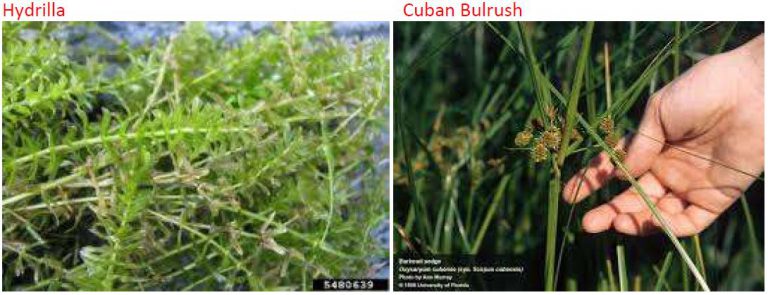February 25, 2019
Invasive Plants 2019
John Schmidt
The lake was treated by FWC for Hydrilla during the week of December 13th. They applied herbicide to treat some areas but did not treat the entire lake. Some hydrilla helps water clarity. They plan to use a mix of herbicides and grass carp to keep in in check. This past summer the high-water levels kept FWC from treatments. FWC is on a pause right now pending upcoming public hearings on herbicide application.
In April of 2019 FWC plans to stock approximately 1,000 sterile grass carp. Grass carp stocked into Johns Lake that would still be alive in 2019; 1,000 stocked April/May 2015, 750 stocked Feb 2016. There is no way to accurately say exactly how many of those carp stocked are alive because we don’t have perfect numbers for stocking mortality (predation by largemouth bass when they are young, etc.). We are working to get better numbers on the natural grass carp mortality curve. From what some have observed, you start to lose 10-20% per year after age 6 or so. Most do not live past age 10-12.
FWC agreed to stock an additional 1,000 carp this winter because of the way the hydrilla expanded so quickly in September. When you get the right numbers in a system you shouldn’t have to treat 1,000 acres at a time like we did in December 2018. This is no one’s fault. All systems are different, weather patterns are different, and the stocking of carp should always be in conjunction with small, sometimes frequent, herbicide treatments.
From an FWC perspective the lake looks great. We have good coverage of submersed vegetation. Water clarity is good. We are seeing an upward trend in our largemouth bass quality and noticing more ducks as well.
Some hydrilla comments:
- In general, the target is 5 carp per acre of hydrilla we want to control.
- FWC doesn’t want/recommend we control all of it.
- There is a huge down side to too many carp because it only requires low numbers of carp to control hydrilla, if you add too many carp, they will eat all of the hydrilla and other plant species that are important to maintain optimal water quality.
- There are mechanical options for removal, but they are either too expensive, ineffective, or detrimental to the native plants.
In addition, FWC was treating the oxycaryum cubense or Cuban bulrush along the shoreline around the lake where they found it during the same timeframe. Other known problem plants are Torpedo Grass.


